ArtBo + 43SNA: Humanity
Global compassionate connections found within various works at the recent Colombian art fairs

When planning a visit to Colombia to take in the vast amount of contemporary art works at Bogotá’s ArtBo and Medellín’s 43rd Salón (inter)Nacional de Artistas, instincts would predict a large presence of works around violence, drugs or political turmoil. But much like the country’s forward-thinking residents, the artists have jilted these now-stereotypical cultural issues and are instead focused on examining the nation’s place among the world at large, as well as who we are as a global civilization, in order to build a promising future for everyone. Colombia’s capital and second city are on the tail-end of a well-planned transformation, and the prevailing mentality to build a better humanity is not only refreshing, but a leading example of how to overcome and rise again. Below is an array of works that speak to an investigation of our collective reality and—as stated in the Salón’s mission statement—a shared desire “to connect and communicate, to know and recognize.”
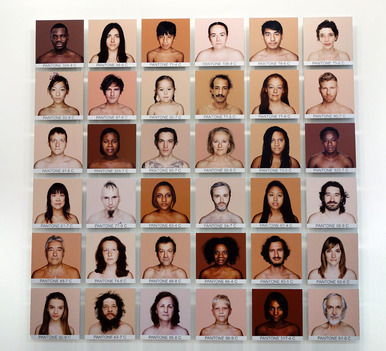
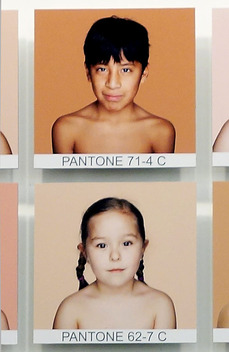
Angélica Dass: Humanæ (2012-ongoing)
“Humanæ” is an ongoing project in which Brazilian artist Angélica Dass uses the universal color-coding system Pantone to create a photographic taxonomy of skin tones in a question of identity. By showing how skin color is really nothing more than a simple classifiable unit, she reduces its perceptible cultural importance while showing just how minute many of the variations are across numerous ethnicities. Of her massive project, Dass explains, “The only limit would be reached by completing all of the world’s population.” On view at ArtBo at Max Estrella gallery.
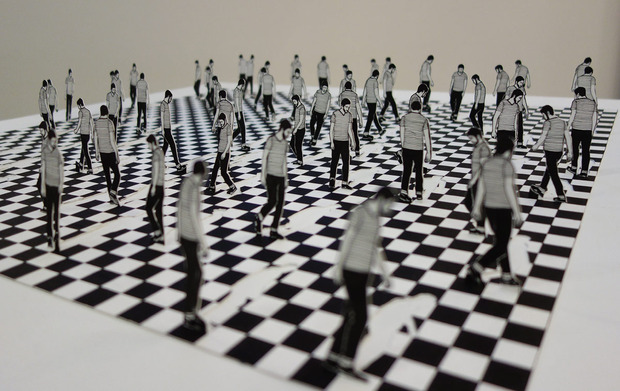
Manuel Calderón: Mecánicamente (2013)
In “Mecánicamente,” Colombian artist Manuel Calderón explores how a person loses his or her uniqueness after infinite repetition, and how humans are ultimately constrained by the spaces they consume. Comprised of 36 slightly different cut-outs of a man in transit, “Mecánicamente” is a study on limits and infinity, showing how cosmic time is infinite yet we are restricted by our understanding of our place within it. Therefore, we construct routine behaviors which in turn, end up dulling mankind. On view at ArtBo at El Museo / Fernando Pradilla gallery.
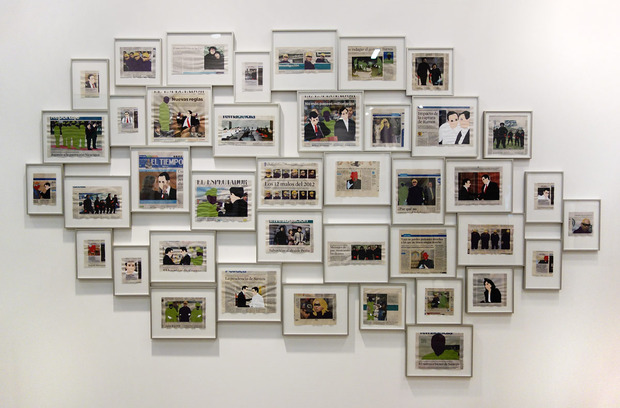
Jorge Julián Aristizabal: Policias y/o Ladrones (2013)
By masking the faces found in media, Colombian artist Jorge Julián Aristizabal aims to confuse the brain and “awaken the language of the unconscious,” showing how these images alter our recollection and perception. “I want to develop concepts that show us how vulnerable we are,” he explains in his bio. In “Policias y/o Ladrones” the artist paints over the faces of people making the news in an seeming attempt to strip the article of social bias, forcing the viewer to focus on the story instead of the person. Arguably, it makes the point that this painted figure could be anyone, and in the end, we are all thieves. On view at ArtBo at Galería de la Oficina.
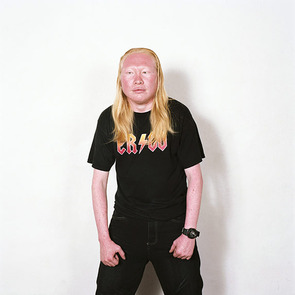
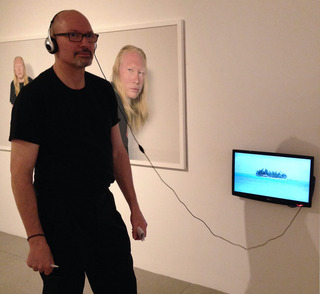
José Castrellón: Kuna Metal #4 (2011)
Growing up in Panama City, Panama, photographer José Castrellón began documenting music gigs at the young age of 15. But the young artist’s series, “Kuna Metals,” reflects his interest in creating narratives around lesser known subcultures—in this case, Panama’s indigenous Kuna people. As Castrellón explains in the 43SNA catalog, Kunas are one of the few tribes that never succumbed to government oppression, and he sees a parallel between them and the anti-establishment nature of punk bands. But just as interestingly, his focus on Kunas in metal bands highlights the contradiction between metal being a traditionally dark genre, typically popular in Nordic countries, and its strong presence in a tropical locale. Part of 43SNA at Museo de Antioquia.
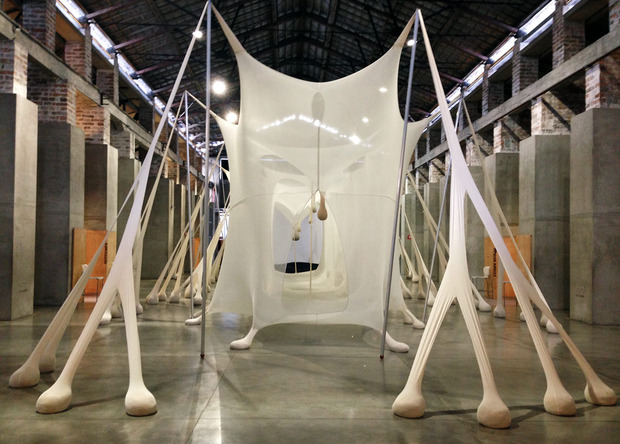
Ernesto Neto: Lanavemadremonte (2013)
As a main focal point of the 43SNA, Brazilian artist Ernesto Neto was commissioned to create one of his beloved sculptural installations in the central hall of the Museo de Arte Moderno de Medellín. His large-scale work invites people inside to explore the womb-like space and, with shoes removed, understand his belief that as living souls “all we have in common is our bodies.” The massive nylon structure, called “Lanavemadremonte,” is anchored by metal poles and vessels filled with a mix of sand and spices, which from the exterior look like bones and tendons. Says Neto of his approach, “I try to create possible spaces where we can, who knows, find and love each other in the impossibilities of the world.” On view at MAMM.
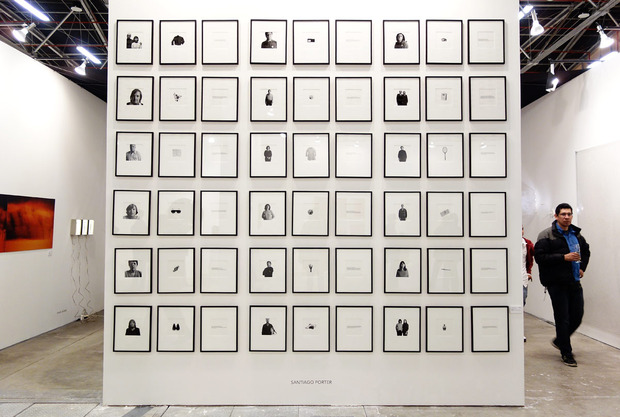
Santiago Porter: The Absence (2001-2002)
In “The Absence,” Buenos Aires-based photographer Santiago Porter looks at the 1994 bombing of his city’s Jewish Community Center. The attack—Argentina’s deadliest ever—resulted in hundreds of deaths and the destruction of the cultural civic center’s library, which was home to some of the most important materials on Judaism in Latin America. His series studies the victims of this massacre through myriad triptychs within it. In an attempt to visually explain the unspeakable human feeling of pain and suffering, Porter creates poignant portraits of those lost by arranging a photo of a still-remaining loved one alongside a photo of a personal item and a written description of what the victim was doing inside the building at the time of the attack. On view at ArtBo at Rolf Gallery.
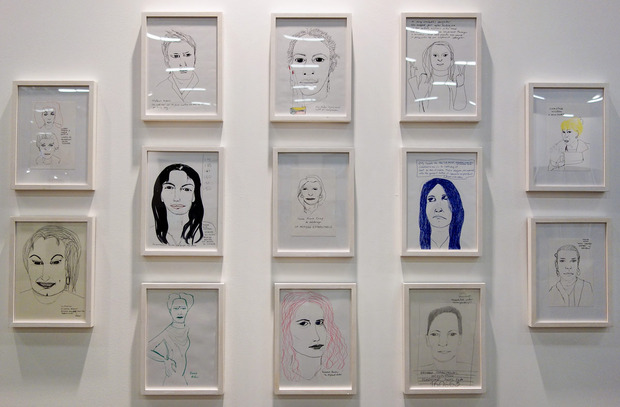
Carolina Caycedo: Criminal Women (2001-ongoing)
In Carolina Caycedo‘s ongoing “Criminal Women” series, the artist investigates modern conventions of femininity by illustrating the images used in newspapers, magazines and the internet which depict female criminals. The artist asks us to reconsider social preconceptions that see crime as a male-dominated sphere, while reinforcing the fact that women aren’t all emotionally charged or passive figures; “They can be, think and act evil.” Subjects include Rebekah Brooks, Pussy Riot, Afeni Shakur, Kathleen Soliah, Leila Khaled and more across five different categories (Political Matters, Organized Crime and Common Delinquency, Out Of This Century, Sexual Kicks and Killers), highlighting the broad range of their felonious behavior. On view at ArtBo at La Central gallery.
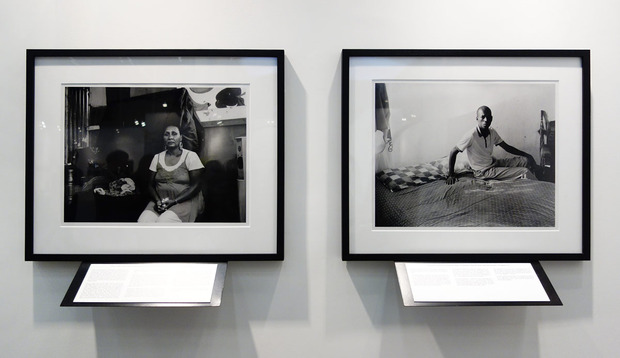
David Goldblatt: Ex Offenders (2010-2011)
In a similar vein as Caycedo, South African photographer David Goldblatt also seeks to understand the true portrait of a criminal. He takes a journalistic approach by visiting the site where a crime was committed along with the offender (who has completed their time in prison), asking them to pose for a photo and tell their story, which he then displays together in his series, “Ex Offenders at the Scene of Crime.” Originally on view at the 2011 Venice Biennale, the series succeeds in showing that the threat of crime is an inescapable part of daily life in every society, and that despite being scarred, these former criminals are people too. On view at ArtBo at Galeria Elba Benitez.
Photos by Karen Day












